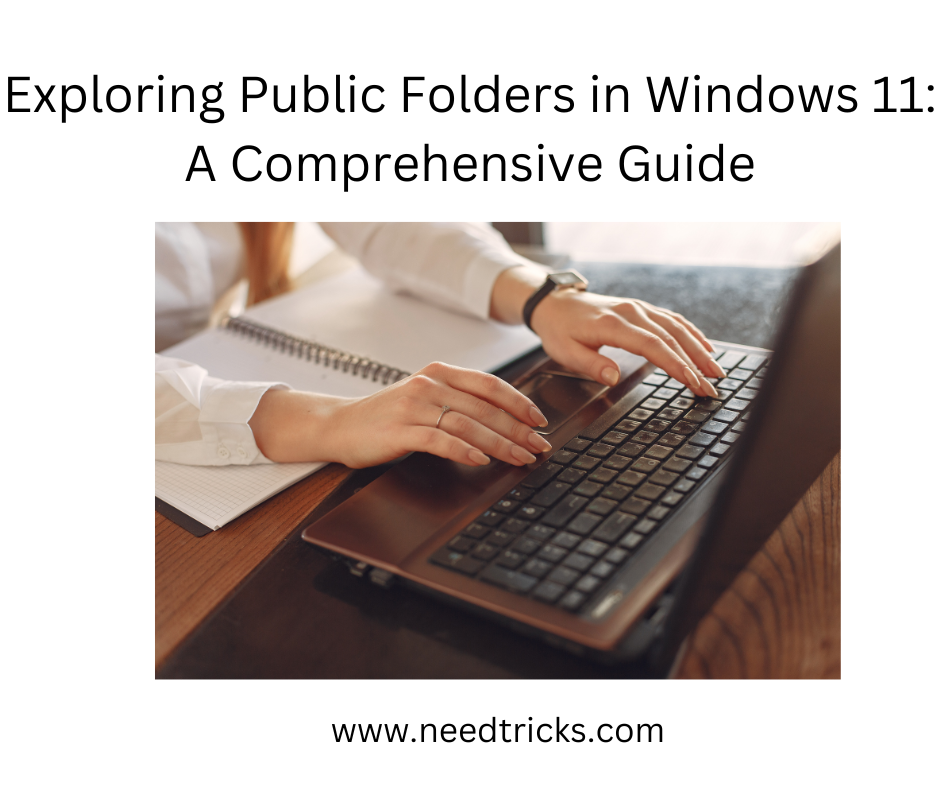The public folder in Windows 11 is a valuable resource for seamless file sharing and collaboration within a networked environment. In Windows 11, the public folder serves as a valuable tool for file sharing and collaboration among users on the same computer or network. Whether you want to share documents, images, or any other type of file, the public folder simplifies the process, making it accessible to multiple users with ease (Exploring Public Folders in Windows 11).
Exploring Public Folders in Windows 11: A Comprehensive Guide
In this comprehensive guide, we will delve into the world of public folders in Windows 11, exploring how to use them effectively, share folders, and access shared content. By the end of this tutorial, you will have a firm grasp of how to harness the power of public folders for efficient file sharing.
What is the public folder?
- The public folder in Windows 11 is a designated space where you can store files that are intended for sharing with other users on the same computer or network.
- It provides a centralized location for collaborative file management.
Why use the public folder?
- Convenience: The public folder simplifies file sharing by offering a common space accessible to all users.
- Collaboration: It facilitates collaboration on projects or document sharing among multiple users.
- Organization: Keeping shared files in one place helps maintain an organized file structure.
Locating the Public Folder
1: Accessing the Public Folder
- Open File Explorer by pressing “Win + E” or clicking the File Explorer icon on the taskbar.
- Navigate to “This PC” or “Computer” in the left-hand sidebar.
- You will find the “Public” folder listed there.
2 Pinning to Quick Access
- For quicker access, right-click the “Public” folder and select “Pin to Quick Access.” This will place it in the Quick Access section of File Explorer.
Using the Public Folder
1: Adding Files to the Public Folder
- To add files, simply drag and drop them into the “Public” folder in File Explorer.
- You can also right-click and choose “Copy” on a file, then navigate to the “Public” folder and select “Paste.”
2: Creating Subfolders
- To keep your shared files organized, you can create subfolders within the public folder.
- Right-click the “Public” folder, select “New,” and choose “Folder.” Give your folder a name.
Removing Files
- To delete files from the public folder, select the file and press “Delete” on your keyboard.
- Remember that this action will permanently remove the file.
Sharing folders in Windows 11
1: Sharing a Folder
- Right-click on the folder you want to share within the public folder.
- Select “Give access to” and choose who you want to share the folder with.
2: Choosing the Access Level
- You can select between “Read” and “Read/Write” access levels.
- “Read” allows users to view the folder’s contents, while “Read/Write” permits editing and adding files.
3: Obtaining the Shared Link
- To share the folder with users outside your network, click “Copy link” to generate a shareable link.
- Share this link with anyone you want to grant access to the folder.
Accessing the Public Folder on Another Computer
1: Accessing via File Explorer
- Open File Explorer on another computer connected to the same network.
- In the left-hand sidebar, click on “Network.”
- You should see your computer listed. Double-click to access it.
- Locate the “Public” folder and double-click to view its contents.
- Mapping the Public Folder
- For easier access, you can map the public folder to a drive letter on the remote computer.
- In File Explorer, click “This PC” or “Computer,” then select “Map network drive.”
- Choose a drive letter, and in the folder field, enter “[Your Computer Name]\Public.”
- Click “Finish” to map the drive.
Tips for Effective Use
1: Regularly organize files
- To maintain an efficient file-sharing environment, regularly organize and clean up files in the public folder.
- Consider using subfolders to categorize content.
2 Set Appropriate Permissions
- Ensure that you assign the appropriate access permissions to users sharing the folder.
- Avoid granting unnecessary write access if read access is sufficient.
3: Secure Your Network
- For network-based file sharing, prioritize network security to prevent unauthorized access to your public folder.
- Use strong passwords and encryption methods when necessary.
Troubleshooting Common Issues
1 Permission Issues
- If users encounter permission issues when accessing the public folder, double-check their assigned permissions.
- Verify that the folder is shared with the correct users.
2 Network Connectivity
- Ensure that all computers trying to access the public folder are connected to the same network.
- Troubleshoot any network connectivity problems.
3 Mapping Errors
- If mapping the public folder to a drive letter encounters errors, double-check the folder path and network settings.
- Ensure that the remote computer has appropriate permissions.
The Future of Public Folders
1: Cloud-Based Alternatives
- In the era of cloud computing, consider exploring cloud-based file-sharing solutions that offer enhanced mobility and scalability.
2. Evolving Features
- Keep an eye on updates and new features in Windows 11, as Microsoft may introduce improvements or changes to file-sharing mechanisms.
By understanding how to access, use, and share folders effectively, you can optimize your file-sharing workflows. Whether you’re collaborating on work projects or simply sharing media files with family members, the Public folder simplifies the process and enhances your Windows 11 experience.











